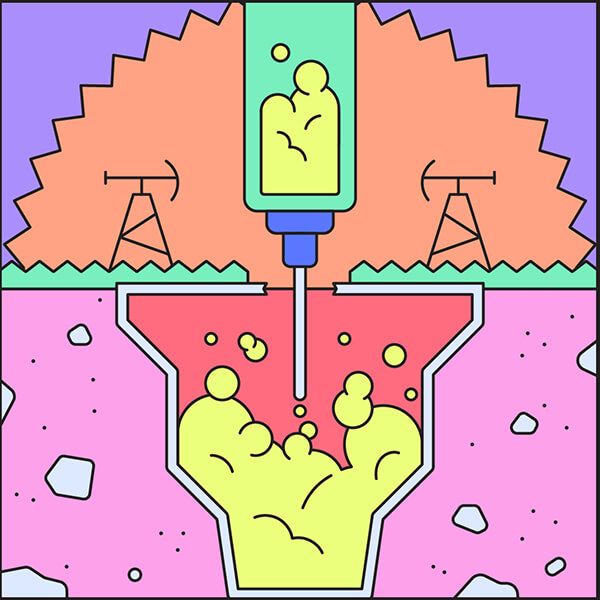Capturing, Storing and Transforming CO2
With the future demand for oil, gas and coal expected to rise in tandem with population growth in Asia and Africa, “you can’t just flip on a switch to sustainable and renewable energy. It’s not going to happen in the near future,” said Iraj Ershaghi, the Omar B. Milligan Chair in Petroleum Engineering.
Now, researchers at the recently opened Ershaghi Center on Energy Transition, or E-CET, at USC Viterbi, have committed themselves to decarbonization by finding new ways to capture, store or transform carbon into useful products. Their goal is to greatly diminish the amount of carbon dioxide escaping into the atmosphere while the world undergoes the decades-long transition from fossil fuels to renewable energy.
Below are examples of some of the transformative work taking place at E-CET.

I. Disposing of old wind turbines in disused oil and gas wells
Background: Wind power, an attractive alternative to fossil fuels, is abundant and non-polluting. However, it has a dark side, specifically that the wind turbine blades contain dangerous BPA (a chemical used in plastics) that can leak toxins into groundwater when buried in landfills.
E-CET solution: Ershaghi said wind turbines that have exceeded their 25- to 30-year lifespans could be broken into 2-inch to 3-inch pieces, mixed with special concrete, and placed in the underground casings of idle wells before abandonment.
Advantage No. 1: Instead of polluting the groundwater and harming agriculture, BPA-laden turbines could be safely stored.
Advantage No. 2: The owners of idle wells could receive disposal fees for every well they use to store pulverized turbines blades, creating a new revenue stream on well plug and abandonment.
II. Capturing car emissions in graphene boxes
Background: Transportation, including cars, trucks, ships, trains and planes, accounted for 28% of the greenhouse gases in the United States in 2021, even more than the electric power sector and industry, according to the Environmental Protection Agency. Carbon dioxide emission was and remains the biggest culprit.
E-CET solution: Center researchers are working on economical ways for using graphene and other technologies to capture carbon dioxide from cars and trucks. Strong, thin and conductive, graphene is a nano-porous material made of a single layer of carbon atoms.
Advantage No. 1: “Graphene can act like a filter that can collect carbon dioxide before it gets into the atmosphere,” Ershaghi said.
Advantage No. 2: The saturated graphene boxes could be serviced to extract the accumulated carbon dioxide and convert it into something useful.

III. Storing massive amounts of carbon dioxide in disused oil and gas wells
Background: There are 3.2 million inactive oil and gas wells in the United States, according to the EPA. They are quite costly to decommission safely.
E-CET solution: Ershaghi believes carbon dioxide could be safely disposed of in idle oil and gas wells in semi-depleted oil and gas reservoirs and in deep saline formations thousands of feet beneath the surface. Stronger, flexible cement being developed by E-CET researchers would be used to create barriers and prevent leakages in old wells by replacing the old, brittle and potentially cracked cement originally used in their construction. Finally, captured carbon dioxide would be injected into subsurface storage sites in the repurposed wells for long-term storage.
Advantage No. 1: Oil and gas companies can contribute to sequestration that would result in a new and cheaper way to safely store captured carbon dioxide for potentially hundreds of years.
Advantage No. 2: “There’s a tremendous storage capacity underground, just tremendous,” Ershaghi said.




